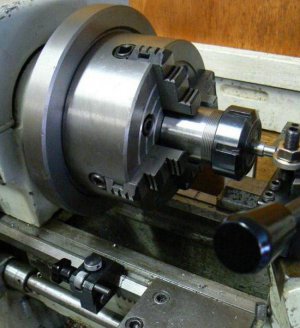- Joined
- Mar 4, 2013
- Messages
- 20
Make sure you buy one that's not worn it will drive
You nuts trying to learn
You nuts trying to learn
Hi All, Flathead red, I think you are right...

You are right of course, but you need to centre the collet chuck in the 4 jaw every time, whereas with the collet chucl straight onto the spindle, you are just about as accurate as your machine will go. But I got to admit, I do use the chuck in chuck method to work small, as if you put a small three jaw in a big 4 jaw you can get rid of a lot of chuck error.
Phil
I've always been told holding tool steel with tool steel is a bad idea...
